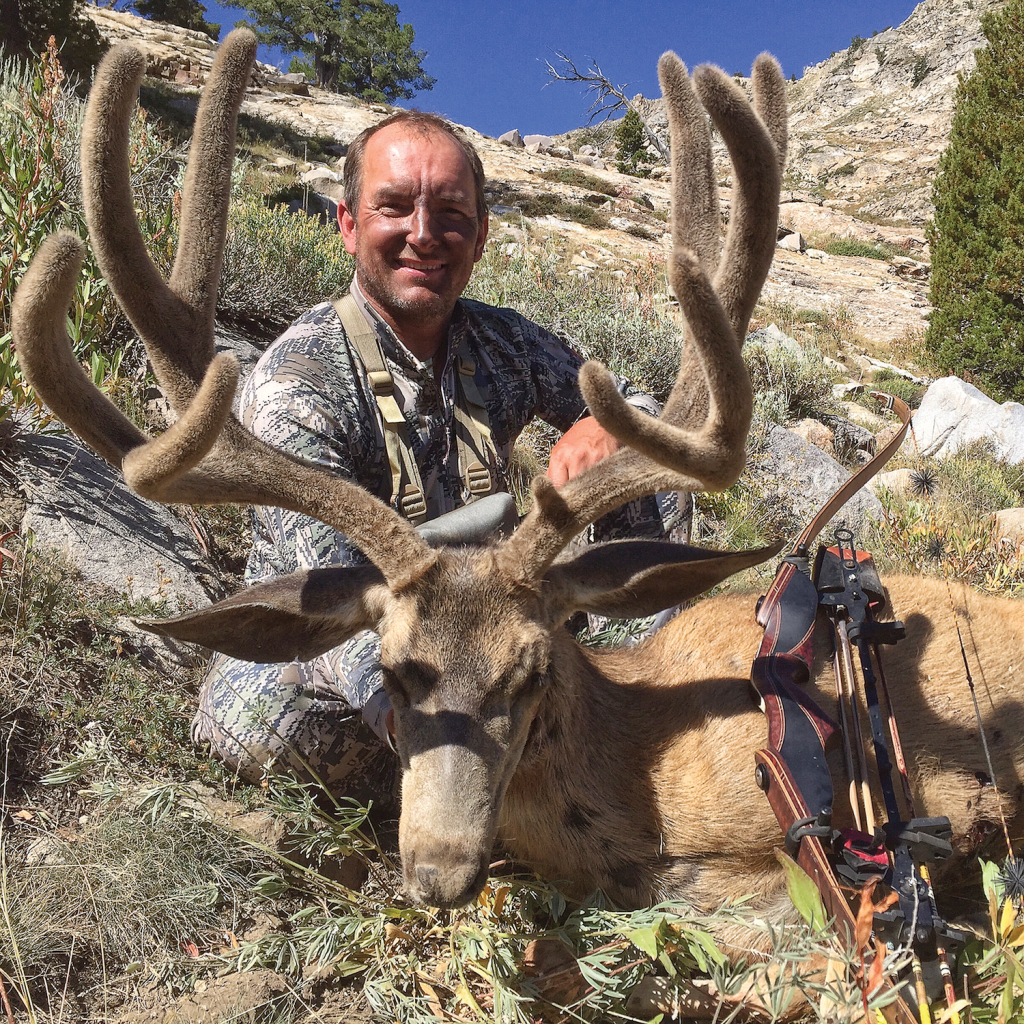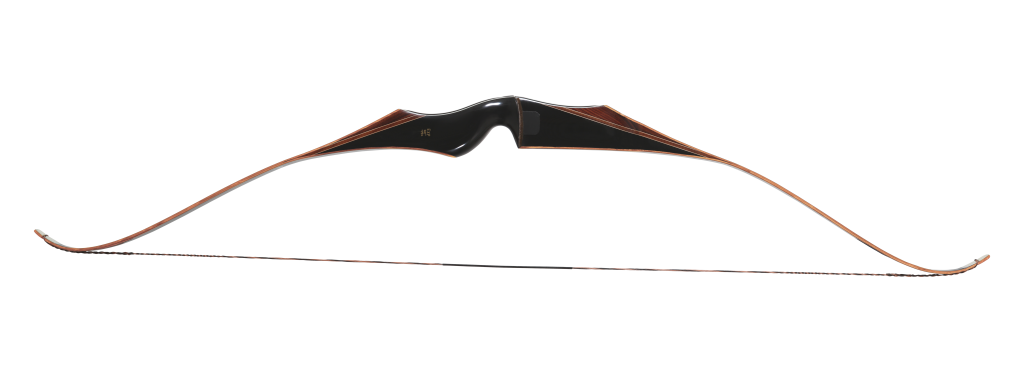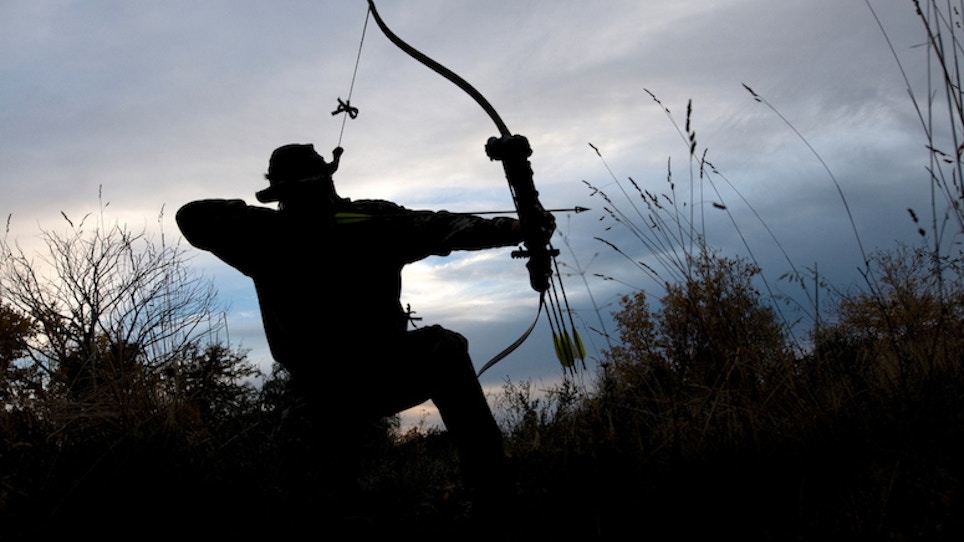I’ve always been infatuated with traditional bowhunting. Yes, for the most part, I am a compound guy, but I have often wondered if I was on my designated bowhunting path. Don’t misunderstand me. I love my compound bow and its effectiveness as a hunting weapon. However, there is something truly special about the simplicity and raw beauty the traditional bow provides.
Noted bowhunter South Cox has also been fascinated with traditional bowhunting equipment, dabbling with it off and on for nearly 35 years. But when it came down to filling tags across the rugged West, his weapon of choice had always been the compound bow. The efficiency it provided along with its overall accuracy made it hard for him to put it down. But in 2008, that all changed.
On the heels of buying Stalker Stickbows the previous year, Cox set out on a stick-bow journey. With Colorado elk and mule deer tags in his pocket, he backpacked into a remote wilderness carrying both his compound and traditional bow. He knew the deficiencies of the wooden bow compared to the compound well, and he had plenty of reservations about his ability to consistently fill the freezer with traditional equipment.
Opening morning came with fierce winds, pushing the mule deer off the alpine and into the towering aspen patches. Using the high winds to cover his sound, Cox grabbed his stick bow and began still-hunting the aspens in search of a mule deer buck. He soon found one 20 yards away. As the arrow sliced through the chest of the 160-inch brute, a traditional bowhunter was born.
Cox will readily admit there can be a steep learning curve for those who truly want to make the switch. Not only do shot distances shrink considerably, but accuracy can also suffer when compared to the compound. Along with this comes the mental side of making the switch.
“Hunting with trad gear is a huge mental test,” Cox explained. “You will experience more misses and have to turn down shot opportunities that you could have easily made with your compound. But having realistic expectations can be a huge factor in overcoming the mental aspect of traditional bowhunting.
“First and foremost, start off with a lightweight bow. When I switched, the draw weight on my compound was about 70 pounds, and my traditional bow was around 50 pounds. Starting off with a heavyweight traditional bow will cause you to compromise your form, develop a poor and inconsistent anchor point, struggle with accuracy, and — worst of all — get hurt. When you first start, you should be able to slowly draw the bow back to anchor, hold for a count of at least 6 seconds and then slowly let down. For most people, the best learning weight will be in the 45-pound range. Also, keep in mind that most people will lose between 1 ½ to 2 inches in draw length compared to their compound.”
A modern traditional bow with quality strings in the 40- to 50-pound range pushing a razor-sharp carbon projectile will blow through medium-sized game like deer with relative ease. Currently, Cox hunts with his 60-inch, 55-pound signature Coyote bow. The advantages of choosing a custom take-down bow is that you can start off with lighter 40- to 45-pound limbs and then move up to heavier limbs as your proficiencies increase.
Whether you choose to shoot a longbow or recurve, or your shooting style encompasses the GAP (using the point of the arrow as a sight point) or instinctive (training the body to shoot accurately without aiming) methods, being a successful traditional bowhunter really boils down to a lot of practice. For Cox, this means slinging a couple dozen arrows twice a day when possible. As a Western hunter, he’s looking to consistently hit a 6-inch pie plate out to 30 and 40 yards.

South Cox, a noted backcountry stick-bow authority, recommends a bow weight in the 45-pound draw range for those wanting to start tinkering with traditional archery.
Cox feels stump shooting with blunt tips throughout a hunt also helps his overall confidence and ultimate success. Doing this not only creates opportunities with judging distances in spur-of-the-moment situations, but it also shows him how well he’s shooting that particular day.
“Confidence is huge when shooting trad bows,” Cox said. “Some days you shoot great and others you simply don’t, so I really use stump shooting to let me know where I’m at that day.”
Cox also insists that shooters, as he puts it, “trust their instincts” when it’s time to deliver the lethal shot. “If it doesn’t feel right, even if it’s in your effective range, hold off on the release. We owe it to ourselves and the game we’re hunting to deliver the best possible shot we can,” he added.
One of the biggest mistakes Cox sees hunters make, regardless of the style that hunter shoots, is not picking a spot. It seems simple enough, but often excitement builds when the moment of truth arrives. Hunters who have not developed this kind of “pick-a-spot” focus will often look at the whole animal, which inherently leads to a poor shot. This is a skill that will be developed over time, but once conquered, you will see your groups tighten and confidence soar.
Lastly, traditional bowhunting is tough, especially for beginners. Cox suggests you really take the time to find a local resource or online connection to help guide you through the many ups, downs and questions you will undoubtedly have in the journey of traditional bowhunting.
Must-Have Trad Equipment
Blending the appeal of a classic cedar shaft with the performance and toughness of carbon composite, the Heritage series from Carbon Express is perfect for traditional shooters. Featuring the manufacturer’s legendary Buff Tuff finish, the Heritage has a straightness tolerance of +/-.005 and a weight tolerance of +/- 2.0 grains.

Bear's Super Kodiak Black Recurve Bow
Walk among legends with Bear’s Super Kodiak recurve bow. With two wood accents to choose from, the handsome three-piece riser is constructed from black phenolic with Bolivian rosewood accent, and the limb cores are made with maple laminate and overlaid with high-strength black fiberglass. The two-piece riser model is made of brown and black hard-rock maple featuring limbs overlaid with clear maple, backed and faced with high-strength black fiberglass. The Super Kodiak is available in lengths of 60 and 64 inches and draw weights ranging from 30 to 65 pounds.
Hoyt’s Buffalo will definitely appeal to the traditional hunter. Featuring a full, dual-radius shelf, 19-inch precision machined aluminum riser and Hoyt’s exclusive Paralever Limb System for an incredibly smooth draw, this rig was made for the woods. Each Buffalo is individually numbered and comes with a custom handmade Flemish string, bow stringer, rug rest and calf-hair side plate.
Gold Tip’s Traditional Classic XT is built from a heavyweight, small-diameter carbon shaft equipped with stainless-steel inserts and reinforced ballistic collars. The Classic’s strength and durability coupled with the look of a custom wood-grain traditional shaft makes it a solid choice of hunters seeking hard-hitting traditional arrows.

Gold Tip Traditional Classic
Featured photo: John Hafner Photography







